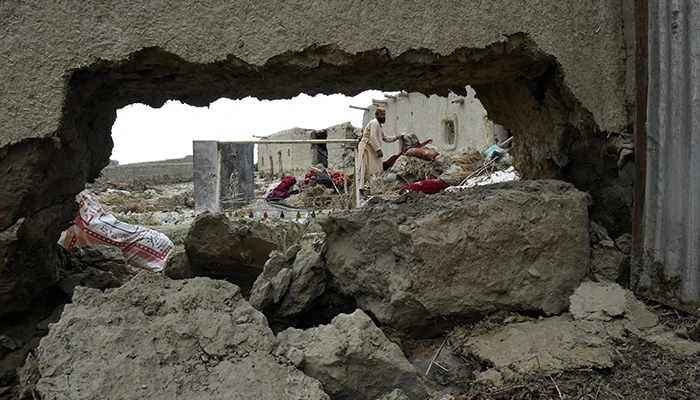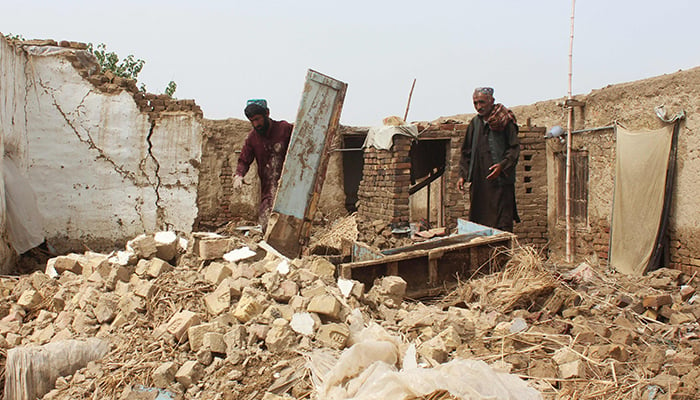[ad_1]
- PMD officials say monsoon spell caused rain in other countries as well.
- “We are monitoring the situation very closely,” officials say.
- “But climate change is to blame for this unusual monsoonal activity.”
ISLAMABAD: Climate change can be attributed to “extraordinarily above normal rains” in Sindh and Balochistan in the current monsoon season, Pakistan Meteorological Department (PMD) officials said Friday.
Excessive heat or back-to-back heat waves in the southern parts of the country in May and June this year created a “strong seasonal or heat low” in July that caused heavy rains in southern Pakistan, they said. “This year, the monsoon axis also remained in the south of the country, while anti-cyclonic winds steered most of the monsoon systems to the southern parts of the country,” Chief Meteorological Officer (CMO) Sindh Dr Sardar Sarfraz told The News.
Sindh received 385% more rain between July 1 and August 19 this year. Balochistan received 371% more rains in the same period, PMD data showed.
In the month of August alone, Sindh received 495% more rains, while Balochistan received 237% more rains in the first 19 days of the current month.
“The monsoon systems that wreaked havoc in Sindh and Balochistan in this season were so strong that they also resulted in rains in Afghanistan, Iran and the Middle East. This is an unusual phenomenon and we have to monitor it to see if it becomes a new normal in the years to come”, Dr Sarfraz said.

Several other meteorologists associated with PMD and from other South Asian countries have been warning for the last several years that the rising temperature of the Indian Ocean and the Arabian Sea may result in torrential rains and extreme weather events for southern parts of Pakistan, especially the coastal areas of Sindh and Balochistan.
Dr Sarfraz said several other factors, including lower than normal temperature in the Pacific Ocean and high temperature in the Indian Ocean, also contributed to excessive rains in Sindh and Balochistan.
There is a need to study this pattern to predict whether monsoon would continue to cause such rains in the future, he said.
Talking to The News, Director General PMD Mahr Sahibzad Khan also blamed climate change for the unusually above normal rains.
He said they had already predicted “above normal precipitation” for the southern parts of the country in the first half of the monsoon season and normal or below normal rains in the second half of the monsoon season.

He maintained this year, the spring season was not observed in Pakistan and unusual rains indicate that country is witnessing the impacts of climate change, he said.
“We are monitoring the situation very closely, but climate change is to blame for this unusual monsoonal activity in Sindh and Balochistan”, he said.
He warned that high moisture following monsoon rains may result in heavy smog and fog in the plains of the country in the months to come. It was too early to predict winter and snowfall in the northern parts of the country, he said.
Originally published in
The News
[ad_2]

